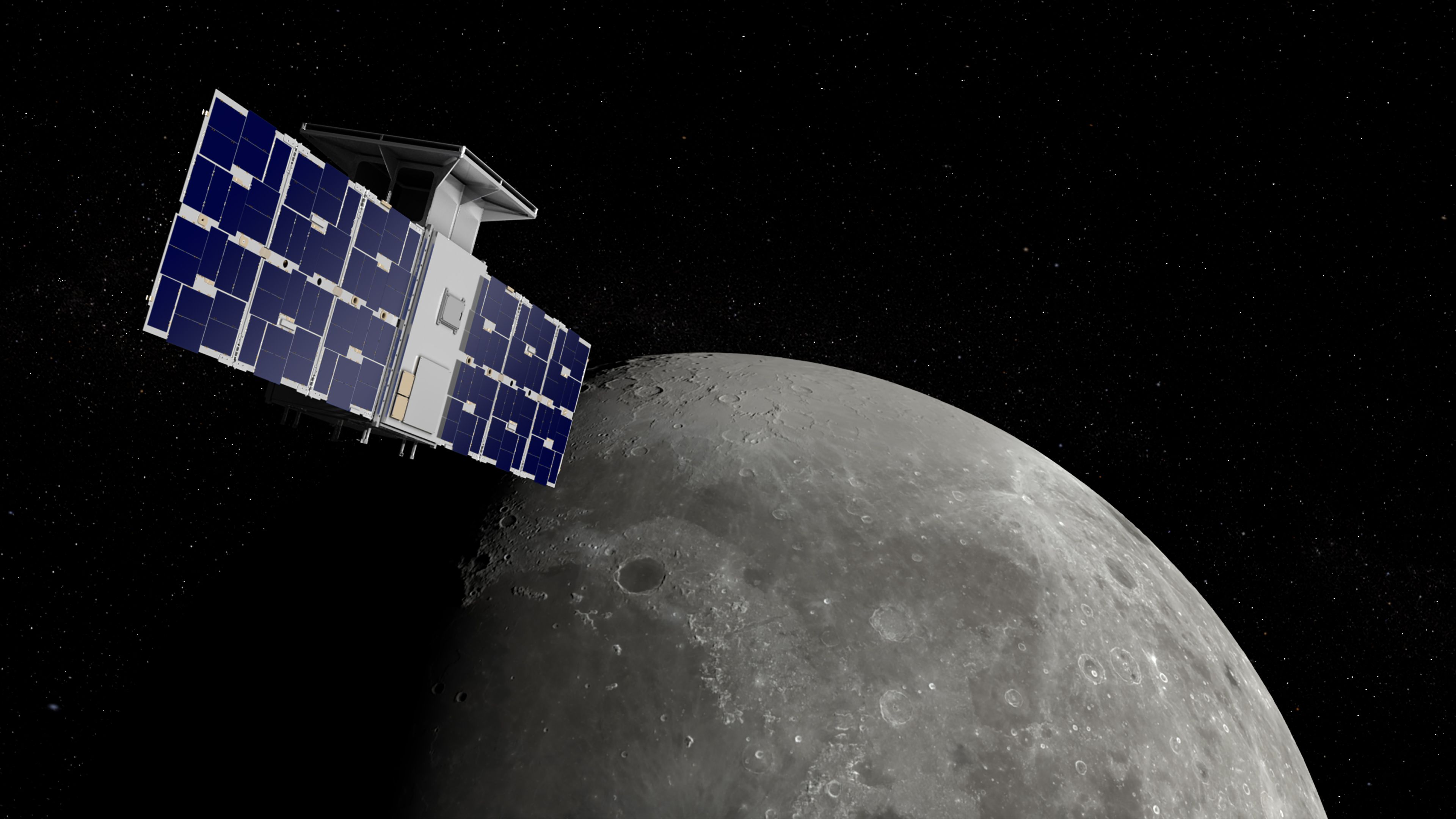NASA's CAPSTONE cubesat launch to the moon delayed to May 31
And the date could shift again.

A tiny moon-bound spacecraft will wait at least a few days more to launch.
The liftoff of the CAPSTONE mission, short for "Cislunar Autonomous Positioning System Technology Operations and Navigation Experiment," has been pushed four days to no earlier than May 31, NASA announced this week.
"We will continually evaluate the date for the first target launch attempt within the launch period, which extends to June 22," agency officials wrote Wednesday (May 11) in its blog for the Artemis moon program. The post didn't specify why the launch was slightly delayed.
The microwave-oven-sized CAPSTONE spacecraft will launch from New Zealand aboard a Rocket Lab Electron rocket with a Lunar Photon upper stage. It mission is to verify the stability of a near rectilinear halo orbit (NRHO) around the moon, modeling what Gateway — the small moon-orbiting space station that's a key part of the Artemis plan — will need to follow with astronauts on board.
Related: Rocket Lab and its Electron booster (photos)

The planned orbit will bring CAPSTONE within 1,000 miles (1,600 kilometers) of a lunar pole at its closest, providing access to the south pole. That's the main target for the crewed Artemis missions, given the likely presence of water ice in permanently shadowed polar craters.
At its highest altitude, CAPSTONE will swing 43 times higher to 43,500 miles (70,000 km). The advantage of such an orbit is that future spacecraft coming to and from the lunar surface at the south pole won't need to fly as high to meet up with Gateway, but the halo orbit has not been tested yet by other spacecraft.
Breaking space news, the latest updates on rocket launches, skywatching events and more!
Complicating matters is the moon has known mascons (mass concentrations) that may perturb orbits. So NASA is seeking an inexpensive test before sending the much more expensive Gateway to such an orbit.
CAPSTONE's secondary mission is to assess spacecraft-to-spacecraft navigation and communications systems with NASA's Lunar Reconnaissance Orbiter, which has been circling the moon since 2009. CAPSTONE was initially supposed to fly in 2021, but the mission was delayed from then due to COVID-related issues.
Follow Elizabeth Howell on Twitter @howellspace. Follow us on Twitter @Spacedotcom and on Facebook.
Join our Space Forums to keep talking space on the latest missions, night sky and more! And if you have a news tip, correction or comment, let us know at: community@space.com.

Elizabeth Howell (she/her), Ph.D., was a staff writer in the spaceflight channel between 2022 and 2024 specializing in Canadian space news. She was contributing writer for Space.com for 10 years from 2012 to 2024. Elizabeth's reporting includes multiple exclusives with the White House, leading world coverage about a lost-and-found space tomato on the International Space Station, witnessing five human spaceflight launches on two continents, flying parabolic, working inside a spacesuit, and participating in a simulated Mars mission. Her latest book, "Why Am I Taller?" (ECW Press, 2022) is co-written with astronaut Dave Williams.
